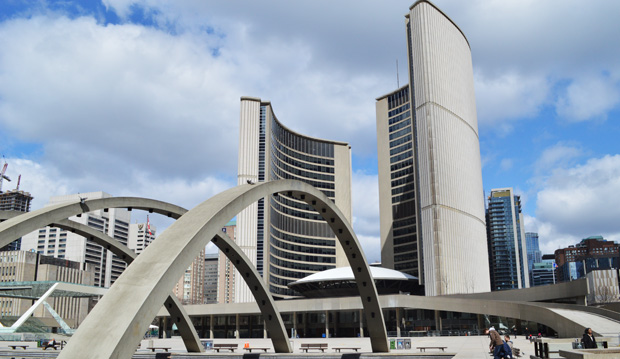


A new report has the city of Toronto looking into how to best deal with the health risks of indoor waterpipe smoking.
Dr. David McKeown, Toronto’s medical officer of health, presented the report to the city’s Board of Health Monday. He says the use of waterpipes – also known as hookahs – is a growing activity. Around 10 per cent of the students in Grade 7 to 12 used hookahs in 2013, according to the report.
When smoking waterpipe, the user lits charcoal, which warms the tobacco to a temperature where it produces smoke. The smoke is then passed through water in the pipe, which allows the user to inhale it.
‘‘Qualitatively we are hearing that young people don’t think this is a hazardous form of smoking,’’ Dr. McKeown says.
One of the main concerns regarding the indoor use is the level of harmful particulates in the air coming from both the flavoured nicotine and non-nicotine tobacco used in waterpipes today, according to Dr. Roberta Ferrence, a senior scientific advisor at the Ontario Tobacco Research Unit.
‘‘Acceptable levels of particulates are generally under 25 micrograms per metres cubed and hazardous levels are reached at around 90,’’ says Dr. Ferrence. ‘‘In Toronto waterpipe cafés the average level was over 1,400 with one venue reaching more than 17,000.’’
Dr. Ferrence says this can be compared to a ‘‘dangerously polluted’’ day in Beijing where the levels reach between 300-500 micrograms per metres cubed.
Some of the speakers at the meeting gave their solution to what Dr. Ferrence and others call a ‘‘new epidemic.’’
‘‘We would like to see a ban on indoor smoking,’’ says Christine Pu of the Youth Action Network.
But not everyone agrees this is an epidemic.
‘‘I’m not trying to diminish the health effects of this,’’ says Samira Mohyeddin, a restaurant owner who rents out hookahs to her customers during their visit. ‘‘However, I find the language that you are using to describe this so-called epidemic highly offensive and I think a lot of you don’t even know what you’re talking about.’’
Mohyeddin says one solution might be to put an age limit on waterpipe cafés.
However, there’s a reason the health risk debate is happening right now, Mohyeddin says.
‘‘You didn’t really care when only Hassan and Ali were smoking. All of sudden that Joanie and Jimmy are smoking it’s become a health concern for the city of Toronto,’’ says Mohyeddin.
At the end of the meeting, the board passed a motion, which directs the medical officer of health to report back at the end of 2014 on what measures can be taken to reduce the risks of indoor use of waterpipes.
The motion also states the medical officer of health must include ‘‘international best practices on waterpipe legislation,’’ an economic impact analysis on businesses and urge the Federal Minister of Health to ‘‘amend the Tobacco Act and regulations to explicitly include waterpipe tobacco products.’’
The final report must also be forwarded to various health organisations as well as the four Toronto School Boards and universities and colleges.
‘‘We got to educate people, we got to get the data [and] working with the businesses,’’ says Coun. Sarah Doucette (Ward 13 Parkdale-High Park). ‘‘We need to move forward.’’






